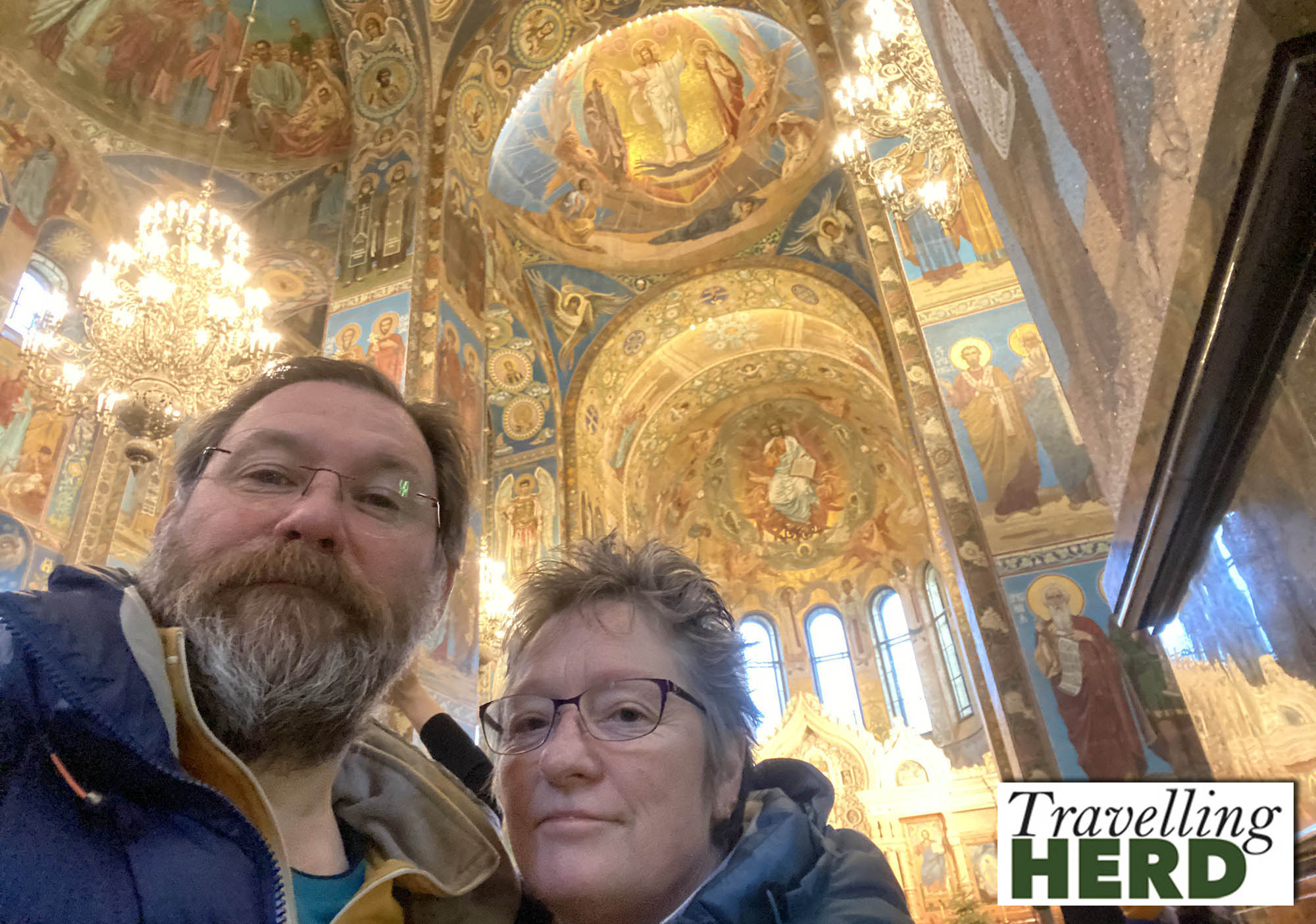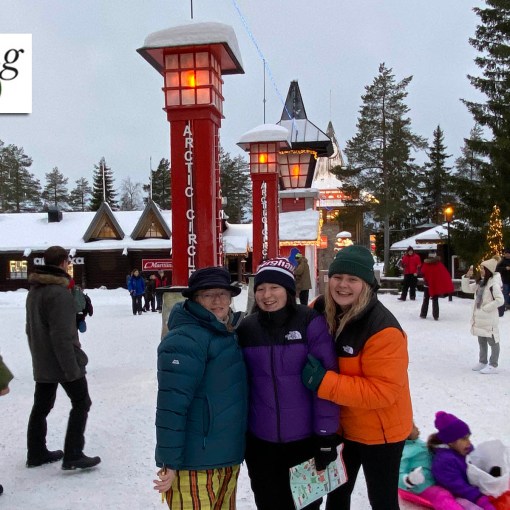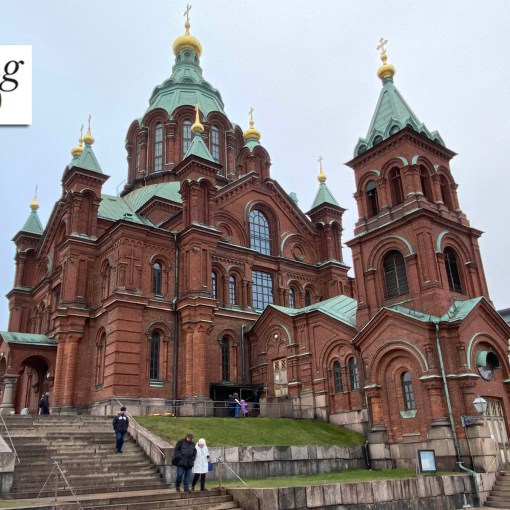Friday 10th January 2020
Before we left the UK we had pre-booked a local guide for four hours for our first morning in St Petersburg to show us round the city – again through London-based Russian travel specialists RealRussia. This is a tactic that we like to use in countries where the languages and scripts are almost totally unfamiliar for us: walking, talking and using public transport but not entering sites helps us to get a feel for a new location. We can then decide the buildings and cultural sites that we want to visit in our own time at our own pace. In his Tour Manager role, Robert has visited many great locations but dislikes being shuffled through at the pace of the guide and prefers to be able to set his own agenda and timeframe.
We met Marina in reception and explained the sort of tour we wanted. Marina was both very knowledgeable and happy to accommodate our requests and it was a pleasure to spend the morning with her walking around the sights and learning more about this fantastic city.
First we asked for a lesson in using the Metro and Marina took us to buy tokens and explained how to use them. There are ways to get cheaper tickets but as we would only be in the city for a few days, tokens seemed to be the easiest option for us on this trip. Each Metro ride costs 55 rubles [70p] and you can travel through as many stations and change lines as many times as you wish, provided you do not go back above ground.
The metro lines are deep underground because of the rivers and canals in the city and the steep escalators seem to disappear into the depths of the earth.
In comparison to the London Underground, the advertising is quite low key, restricted to posters at intervals between the escalators. The escalators at some stations had no advertising posters at all.
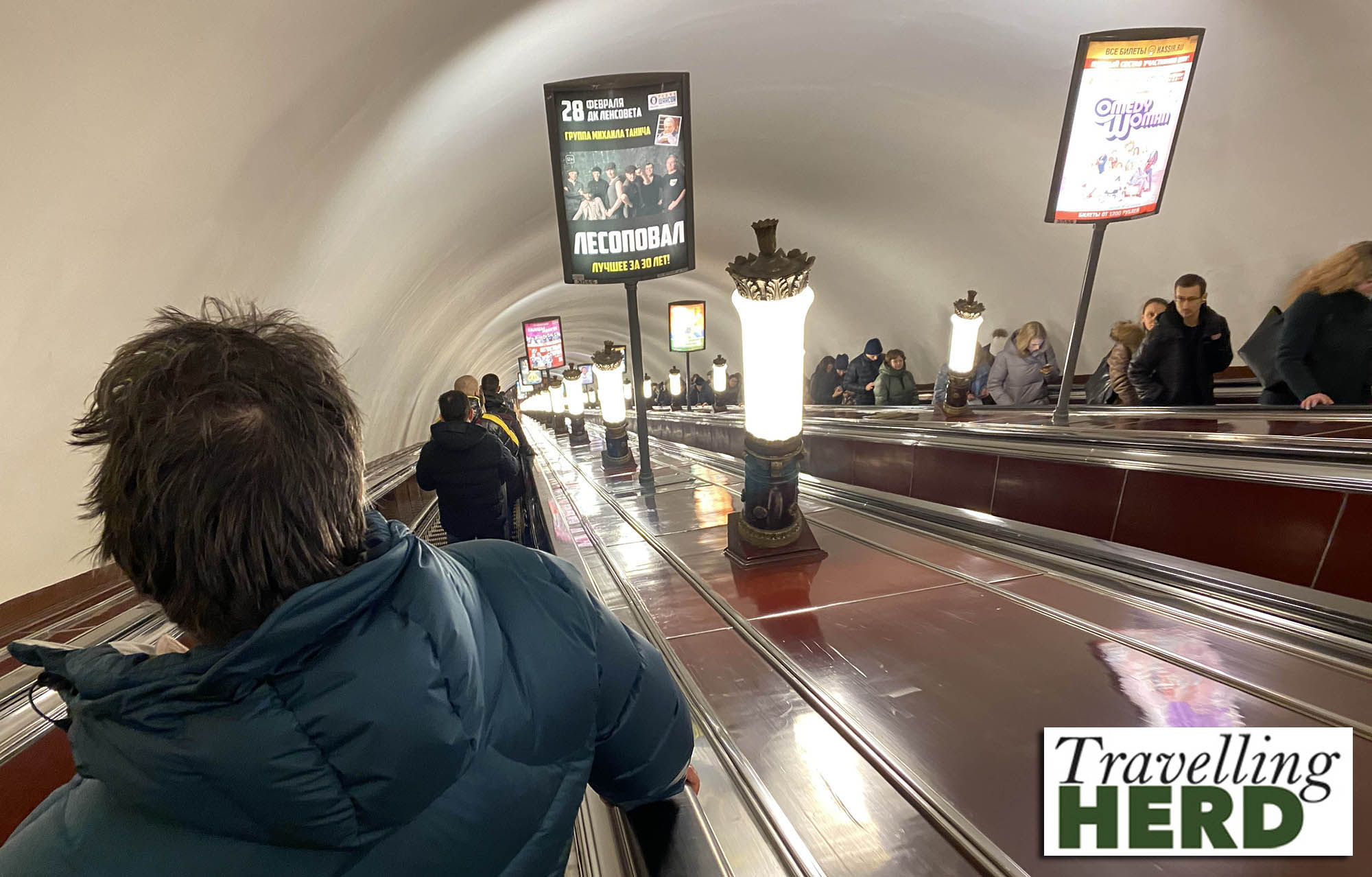
Although Marina had no idea that we would ask to ride the Metro she immediately developed a plan to take us to Admiralteyskaya and as we had to change, she also gave us a detailed explanation of the decoration of the stations we passed through on the way. Initially it felt strange not to be catching the first train which pulled into the station, but the trains are regular and frequent and we had plenty of time to listen and learn more.
During the Communist period, the Metro stations were conceived as “palaces for the people” and so no expense was spared in building these painted, gilt, mosaic and marble halls. The first lines were opened in 1955. We had passed Ploshchad Vosstaniya Station [literally Uprising Square] the evening before without realising what it was as it looked more like a small concert hall than an entrance to the Metro.
Formerly known as Znamenskaya Square [or Sign Square] this was the site of many demonstrations and protests over the years and in 1917 the Bolsheviks renamed it Ploshchad Vosstaniya in honour of this. The metro beneath Uprising Square features military insignia [below left] whilst another pays tribute to the revered Russian poet, Pushkin [below right].
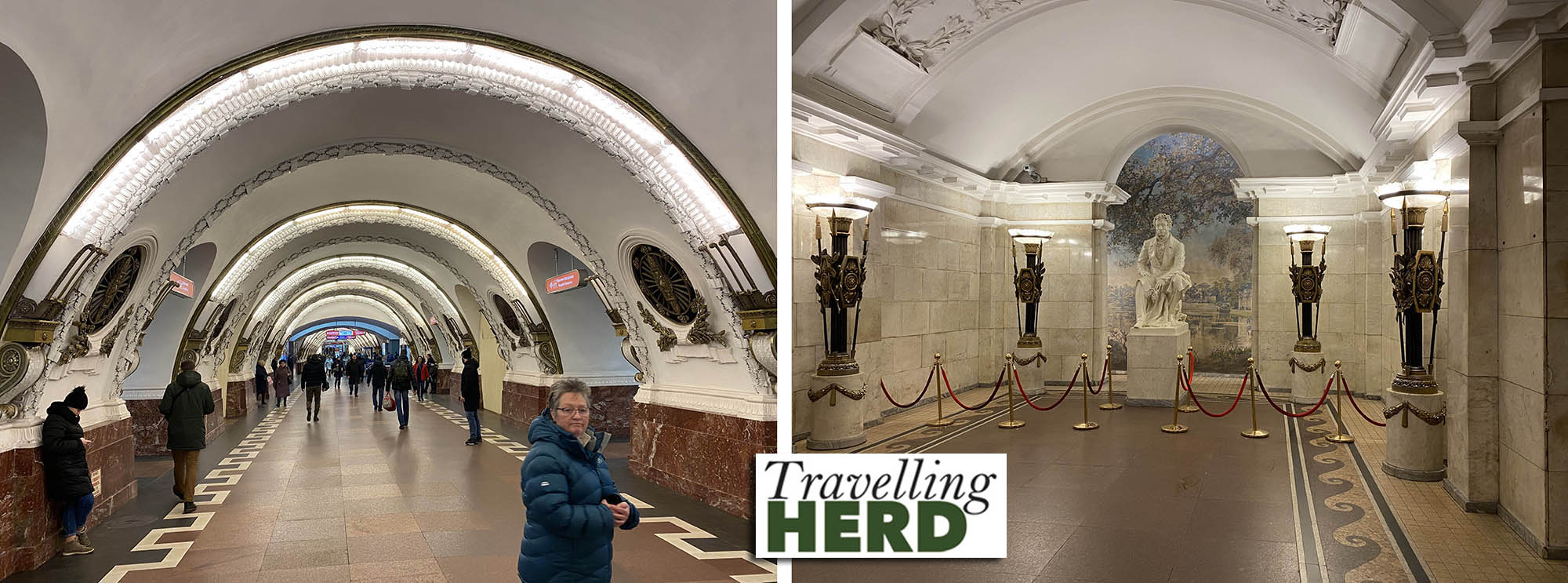
The decoration in each station is themed to match its name and the cityscape above ground.

Admiralteyskaya Metro Station is said to be the deepest one on the St Petersburg Metro at 282 feet down. It opened on 28 December 2011 and was built to ease congestion at Nevsky Prospekt and to provide easier access to the Hermitage Museum.
Unsurprisingly, Admiralteyskaya features vast mosaics celebrating Russian naval prowess and showing Peter the Great towering over his subjects. You might think that this is artistic licence intended to “big him up”, but he was apparently uncharacteristically tall for his time at 6’ 8” [2.03m].

Marina advised us against trying to pronounce words written in the Cyrillic alphabet to avoid embarrassing ourselves. Matilda had worked out that рестора́н meant restaurant but it was our guide who told us that it is not a Russian word but a foreign word incorporated into the language and that it is pronounced as the French would say “restaurant”.
Remerging into the daylight we walked to Palace Square where our guide shared a tip for avoiding the queues for the Hermitage. She said we should go into the General Staff Building; buy a ticket for the Hermitage Complex; look at the 20th century art on the fourth floor then head across the square to the Hermitage and walk straight in.
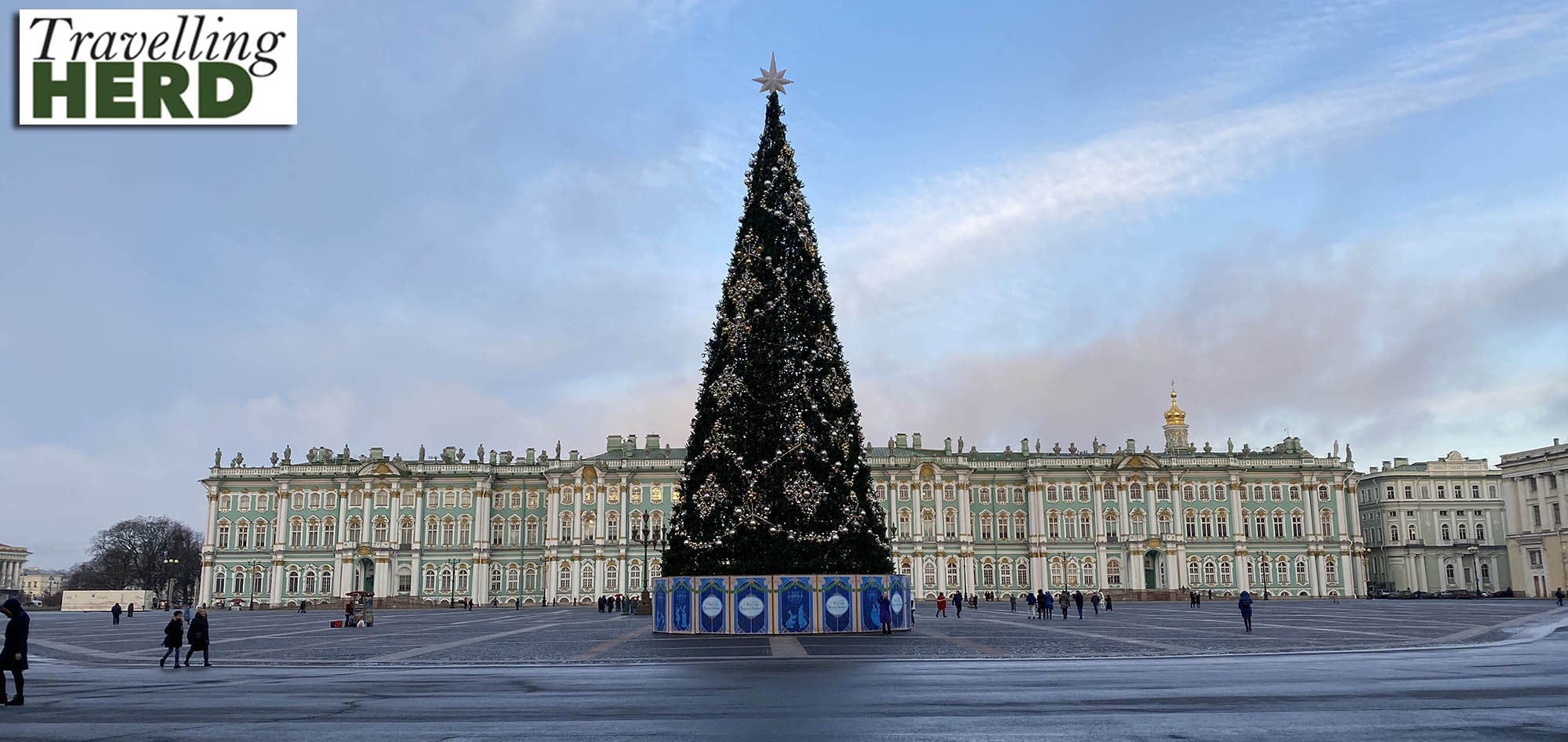
From here she led us across the Neva River over the Palace Bridge with views back towards the Hermitage. . .
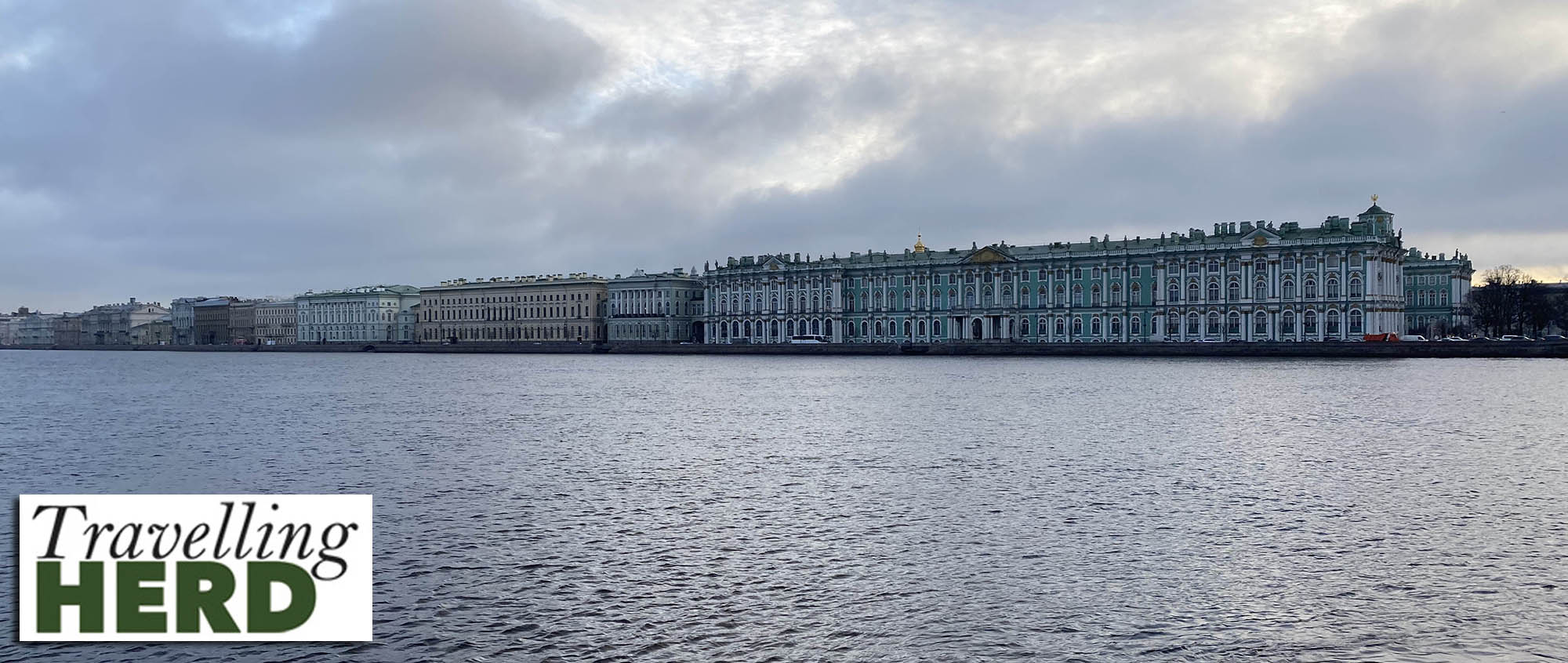
. . . and across the Birzhevoy Bridge then along the river bank by the fortifications to enter the Peter and Paul Fortress.

A single gun shot is fired from Peter and Paul Fortress daily at midday – a tradition which originally started as a sign to the workers building the fort that they could stop for lunch.
As you can see, even with the warning sound of the bells chiming the hour, the gunshot still makes many of those waiting and watching jump.
We passed the Peter and Paul Cathedral – the final resting place of the Romanov dynasty as a thick fog was descending.
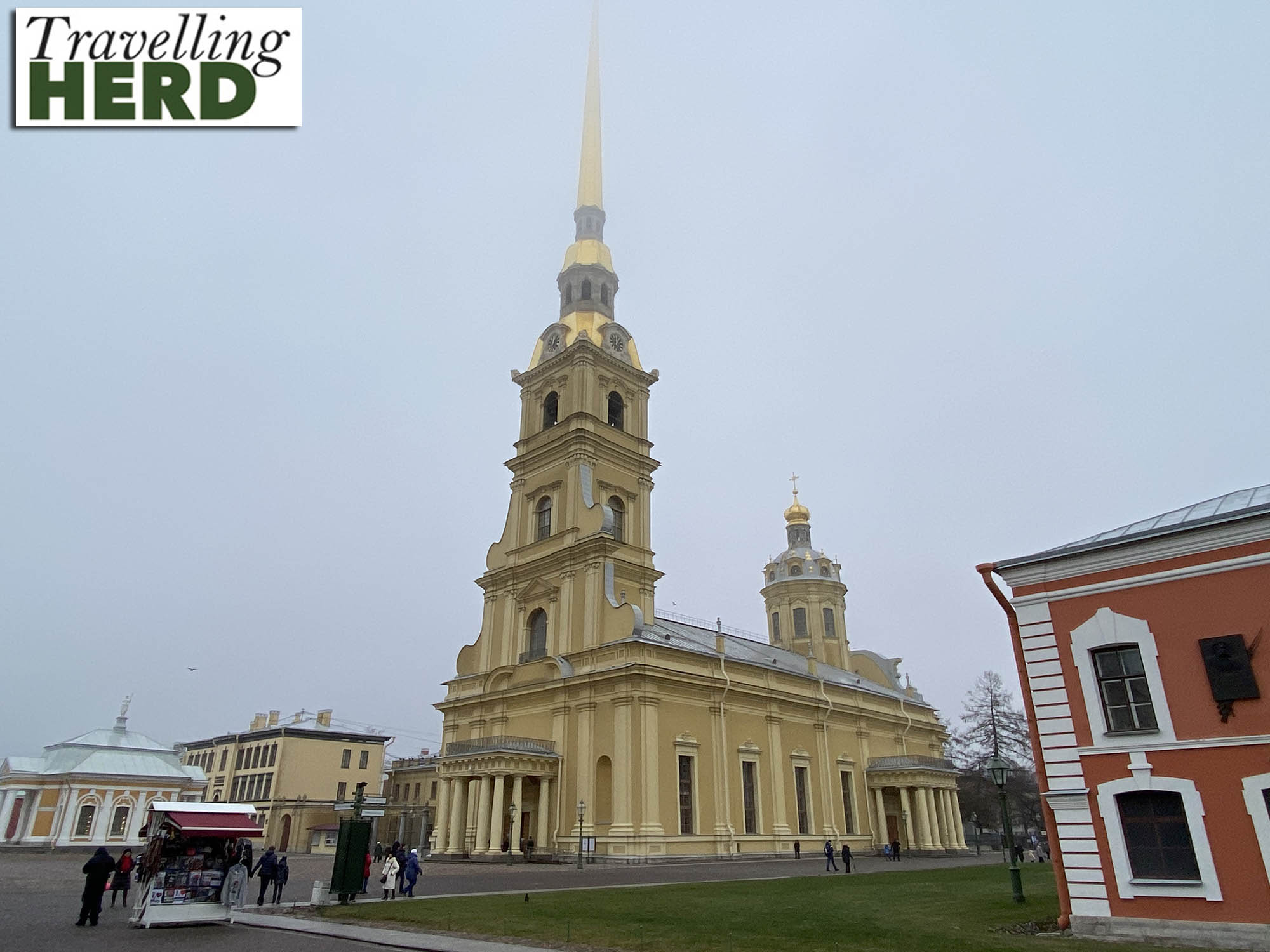
Next we walked to St Michael’s Castle, also called the Engineers’ Castle, which was built between 1797 and 1801 for Tsar Paul I, the son of Catherine the Great. The building was named for the patron saint of the royal family. With some justification, Paul I was afraid of court intrigues and did not feel safe in the Winter Palace. He was also fascinated by medieval knights and so his palace was constructed more like a castle with a moat, a small portion of which remains, and drawbridges.
Just 40 days after he moved into his new home, Paul I was assassinated on 12 March 1801, in his own bedroom, by a group of dismissed officers. Paul’s son, Alexander I, succeeded to the throne and the royal family returned to the Winter Palace. St. Michael’s Castle was abandoned.
In 1823 the building was given to the army’s Main Engineering School, later to become the Nikolayevskaya Engineering Academy and now the Military Engineering-Technical University – hence being known as the Engineers’ Castle. Fyodor Dostoyevsky studded here between 1838 and 1843.
St. Michael’s Castle is now a branch of the Russian Museum, akin to London’s National Portrait Gallery, exhibiting the official portraits of the Russian Emperors and Empresses and various dignitaries and celebrities from the late 17th to the early 20th century.
Unfortunately there were building works going on and we could not even enter the central courtyard.

The State Russian Museum on Arts Square was initially established on April 13, 1895, by Nicholas II, as the Russian Museum of His Imperial Majesty Alexander III on his enthronement to honour his father. The State Russian Museum is housed in many imperial palaces including the neoclassical former residence of the Grand Duke Micheal Pavlovich and the Hermitage.
Our guide told us that the Russian art on display in Moscow is better but that the twentieth century art in St Petersburg is superior. The building is undoubtedly impressive.
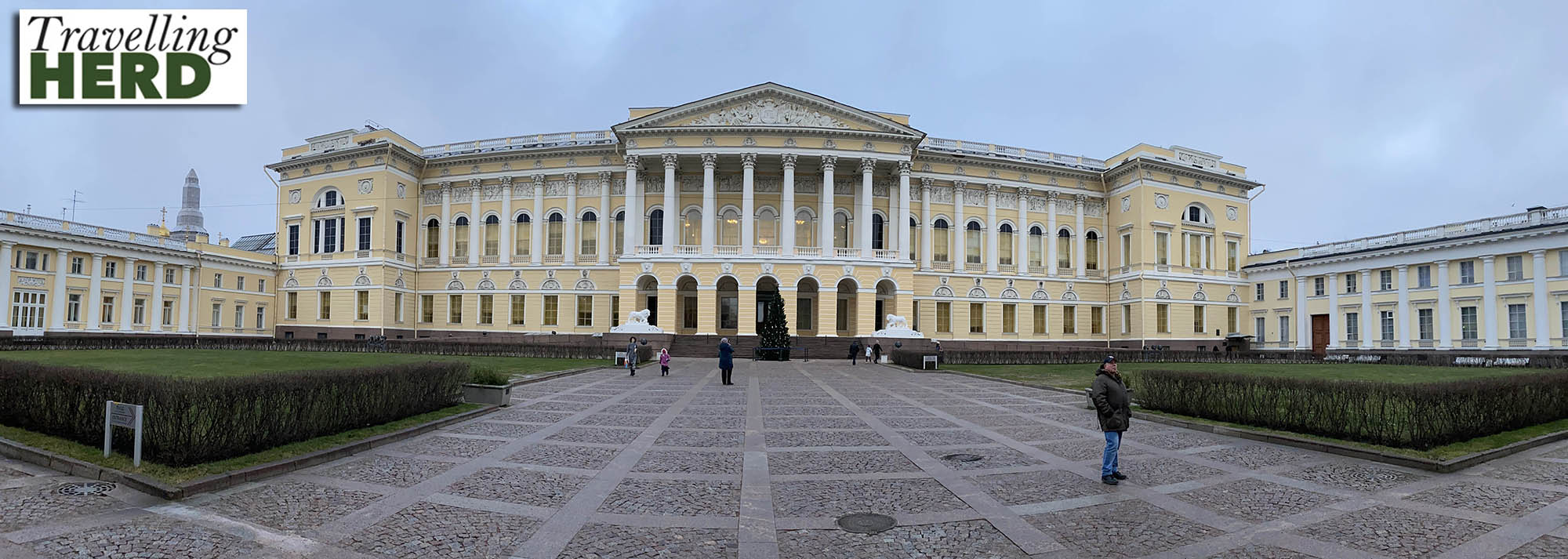
Marina left us in a pleasant and inexpensive cafe to have a hot beverage and to plan which of the sights she had pointed out to us on our walk we would visit later.
But first, a trip to the bank.
Unfortunately Robert had torn what must have been a frequently-folded 1,000 ruble banknote in half taking it out of his wallet. Worth approximately £13, we thought we might as well go into a bank to exchange it. As we talked to Marina about how to go about this a helpful passerby overheard the conversation and said we needed to go to a branch of the state bank.
This proved more time consuming than we expected. Instead of a straightforward swap over the counter, accompanied by a bit of light-hearted admonishment to be more careful in future, Robert found he had to produce his passport and sign a form which the teller had completed for him: he had no idea what it contained. We did however leave with a brand new, mint condition note.
We were close to the Kazan Cathedral on Nevsky Prospekt which was modelled on St Peter’s Basilica in Rome. The central domed structure is embraced by two sweeping colonnades. In 1876 the Kazan Demonstration, the first such political event in Russia, took place in front of the church.
The building has been used for diametrically opposed purposes over the years. Following the Russian Revolution [1917] the authorities closed the cathedral in January 1932 and it reopened in November 1932 as the Marxist, anti-religious “Museum of the History of Religion and Atheism” which apparently would not have been complete without Spanish Inquisition waxworks.
Services resumed in 1992, and four years later the cathedral was returned to the Russian Orthodox Church.

We walked on to The Church of the Saviour on Spilled Blood. This marks the spot where Tsar Alexander II was assassinated in 1881. A grenade thrown by a nihilist exploded as his carriage passed by and when he stepped down to reproach the perpetrator, another bomb was detonated killing the bomber and mortally wounding the Tsar who was taken, bleeding profusely, to the Winter Palace where he died within hours.
Building started beside the Griboedov Canal in 1883 at the site of the attack. The church was commissioned by Alexander III as a memorial to his father and was funded by the Romanovs with support from private donors. Estimated to cost 4.5 million rubles, the building was completed in 1907 during the reign of the last Tsar, Nicholas II. Inside, there is a canopy over the exact spot where Alexander II was mortally wounded.
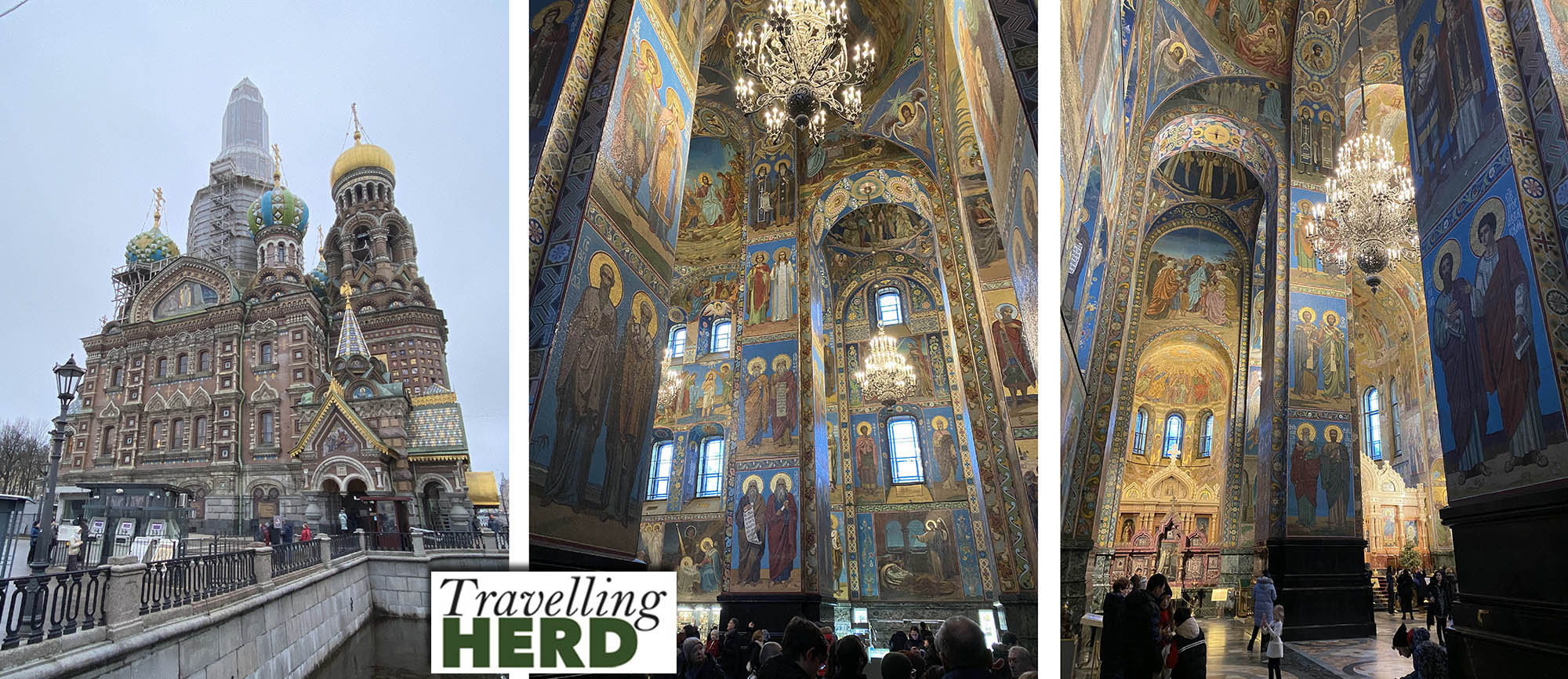
The interior is soaring, ornate and incomparable.
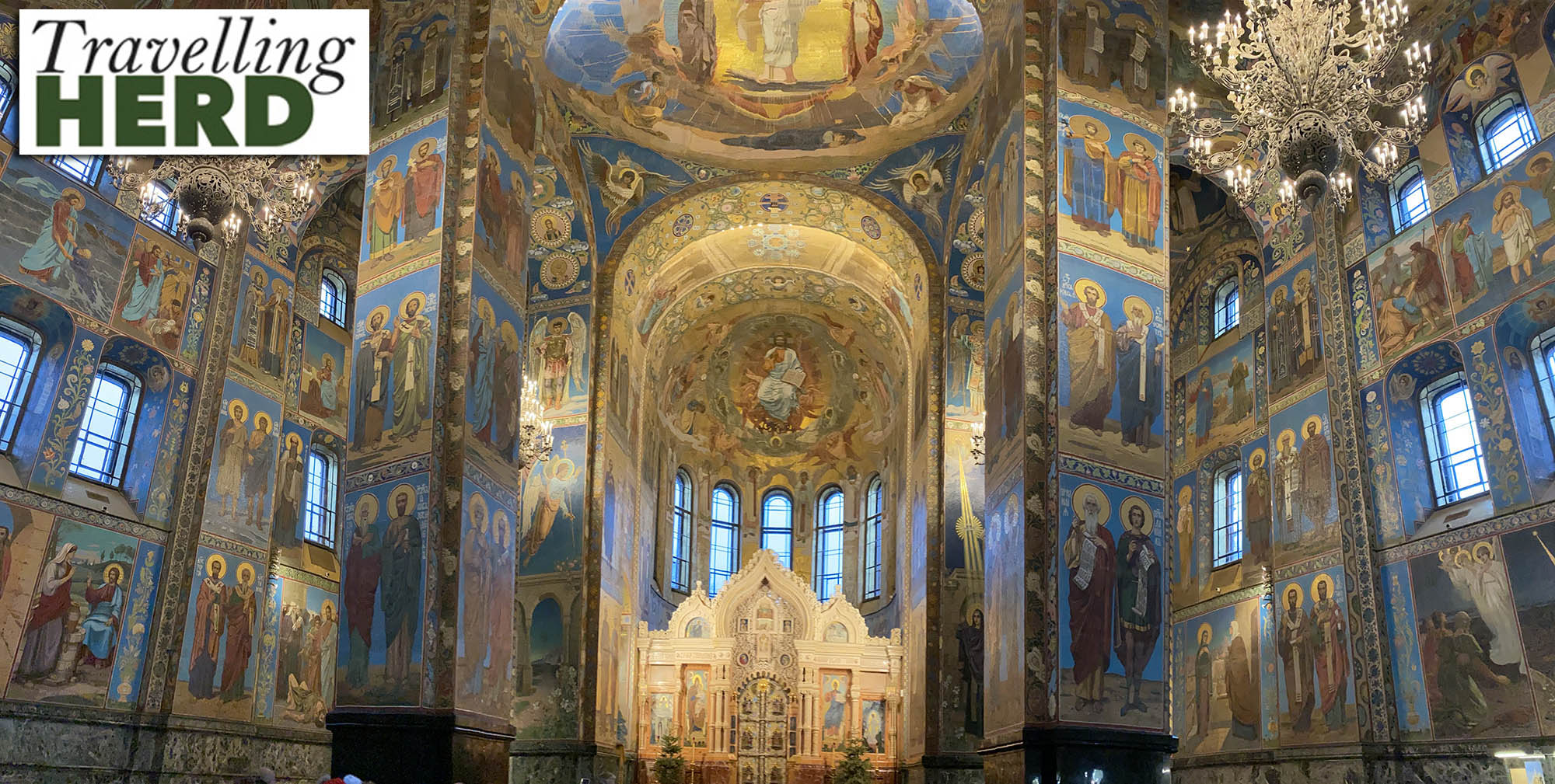
Many of the mosaics are so finely detailed they could be mistaken for paintings.

From here we walked on to St Nicholas Naval Cathedral which was unfortunately closed.
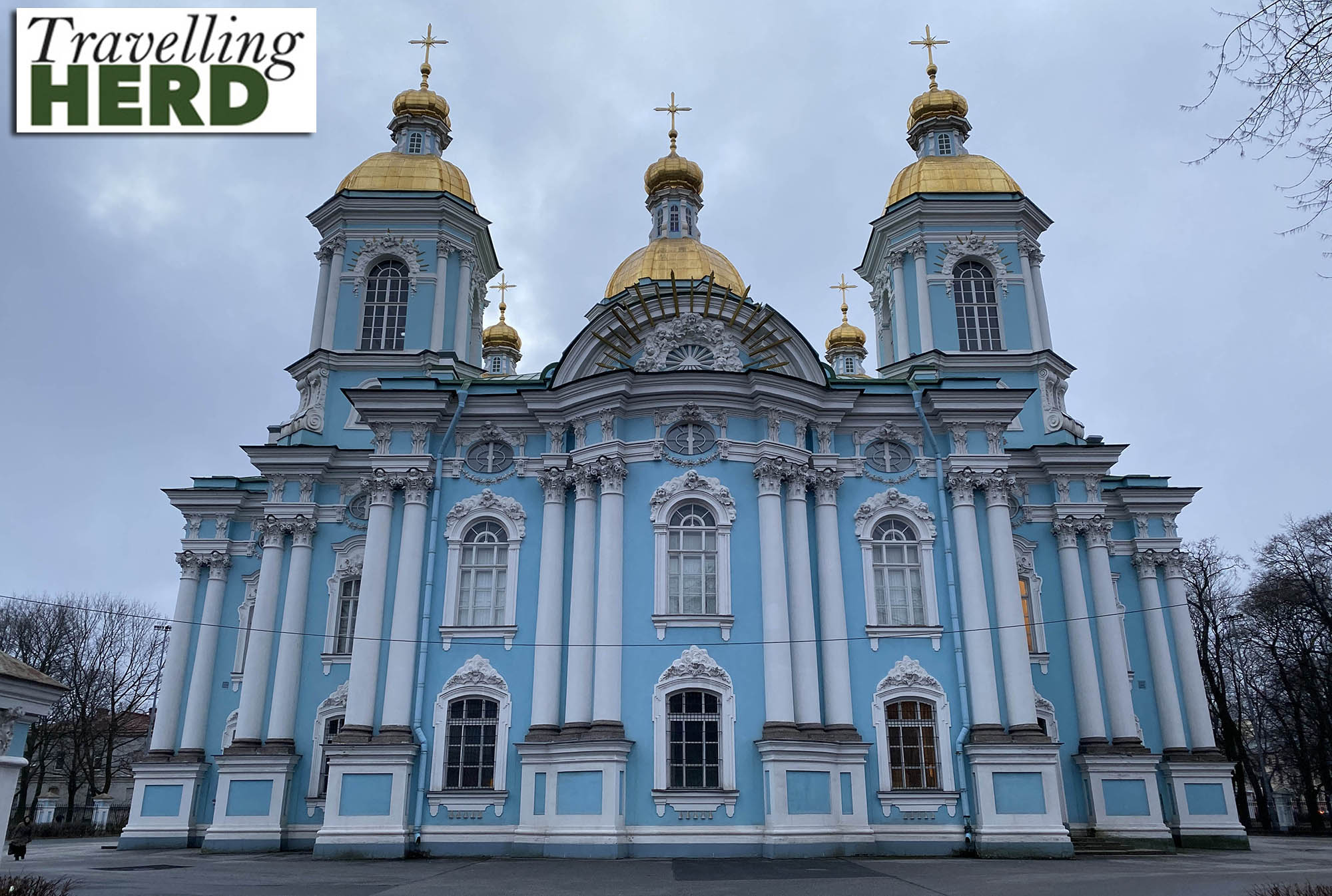
After such a cultural day, we felt we could reward ourselves with a visit to our thirty second Hard Rock Cafe and a nice cold beer. This one is a little out of the way and we were more or less the only customers: the staff were very attentive and helpful as always.
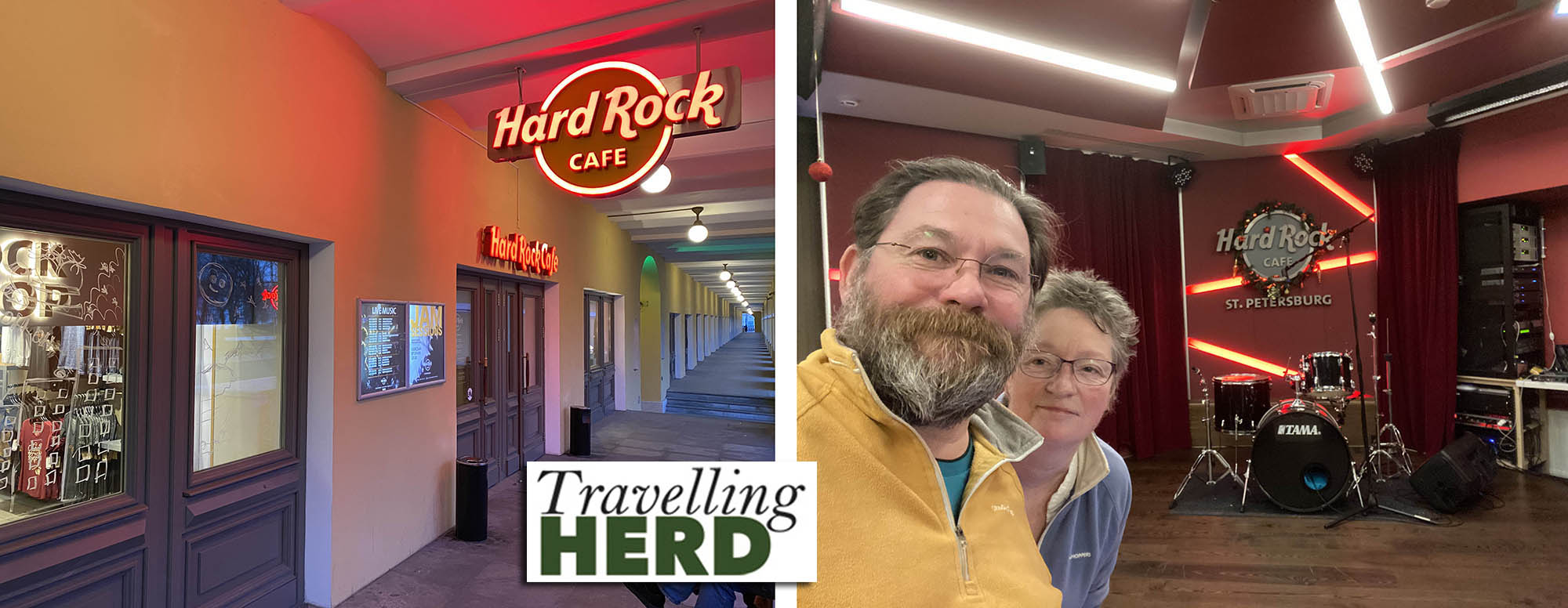
Route Map:
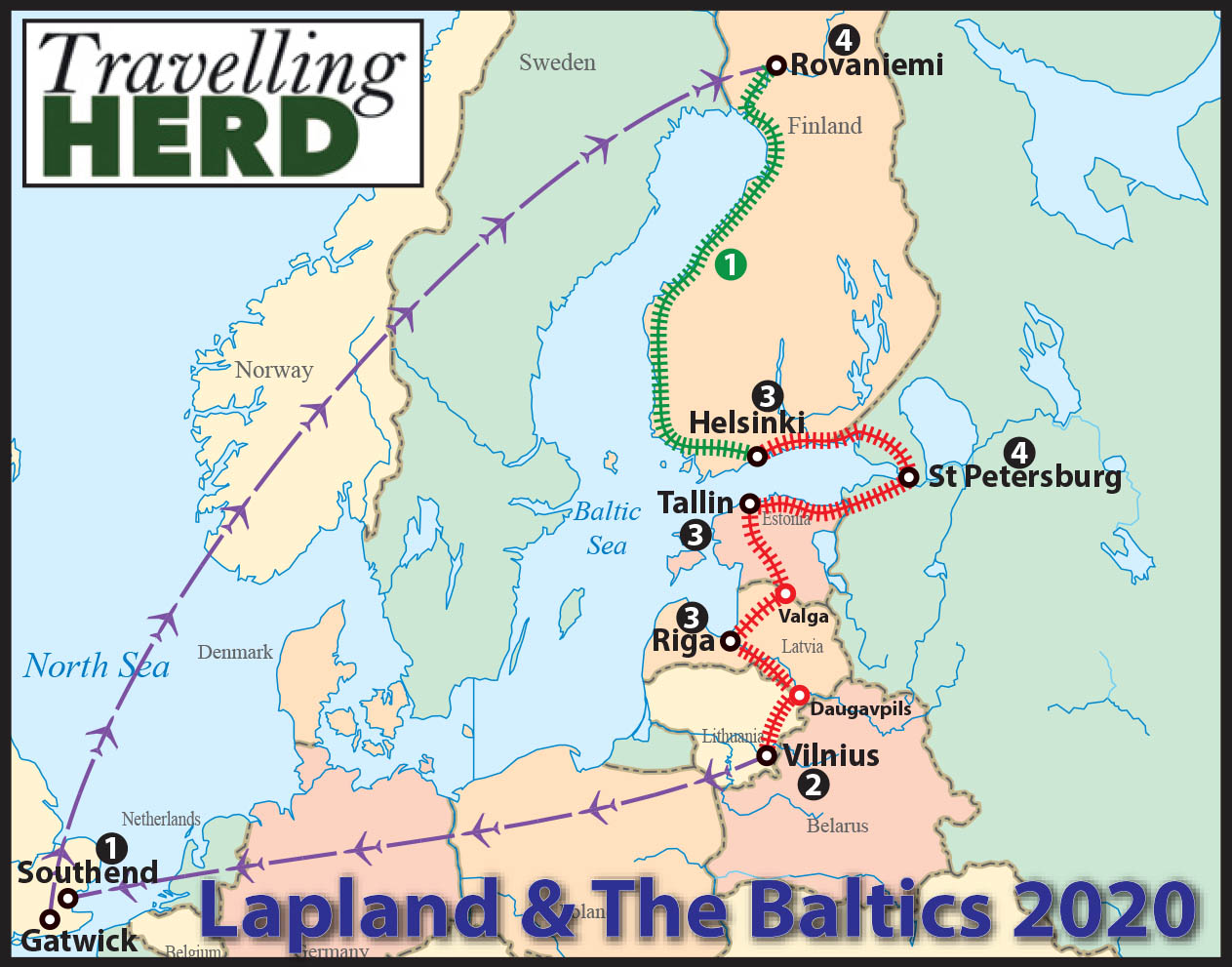
Video of the day:
Selfie of the day:
